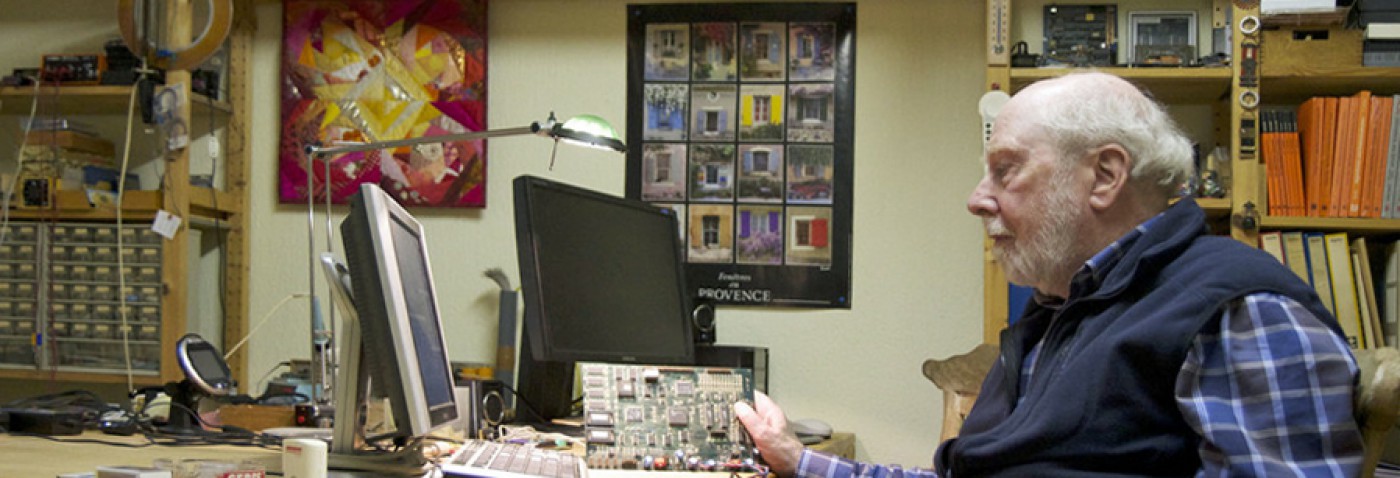APPLE LISA COMPUTER PASCAL
The 68000-based Lisa computer (1979 – 1985) was unique in that the majority of its system and application software was written in a powerful extended version of Pascal called Lisa Pascal. This software included the operating system (90^000 lines), the Workshop development environment (100,000 lines), 7 application programs (each around 50.000 lines [e.g. LisaWrite, LisaCalc]), and an avalanche of development support programs (e.g. mouse-based editor, telecommunications program, and Pascal language utilities).
Apple’s Lisa Pascal developments began from scratch for Apple when it licensed in 1981 a Motorola 68000 native code Pascal compiler from Silicon Valley Software in California. This compiler was based upon the older P4 compiler from Niklaus Wirth of ETH in Switzerland and consisted of two general passes. Pass 1 produced I-Code, a low-level representation of the high-level Pascal constructs. Pass 2, the code generator, converted the I-Codes to optimized 68000 object code. Apple even considered early in the Lisa’s development using a custom Apple processor which would execute P-Code directly, but the expense of developing such a chip was too much for Apple’s accountants and this project was dropped.
All Lisa development was done with the Lisa Workshop, a command line based development environment similar to Apple’s earlier ][ and /// Pascal systems. The Workshop provided an excellent development environment with its Pascal compiler, mouse-based editor, 68000 assembler, and an extensive collection of utility programs (e.g. Format, XRef, ProcNames). The Workshop supported other languages which included BASIC, COBOL, and C.
Apple produced several versions of Lisa Pascal: 1.0, 2.0, 3.0. Version 3. was the last version and supported the creation of intrinsic units which allowed a single copy of a unit to exist in the system and be used by several programs simultaneously. All versions supported language extensions such as otherwise clause in case statements, longint 32 bit integers, § operator for data addresses, data type coercion, and relaxed ordering of const/type/var sections. A lot of bit-based -functions were also
supported (e. g. BITAND to make bit bashing easier. Inline 68000 assembly code could also be used.
Like the Apple /// Pascal, Lisa Pascal also supported SANE, Apple’s IEEE floating-point implementation. In addition to SANE Apple developed a fairly comprehensive math package called MathLib.
Apple also developed an IEEE floating-point test program which attempted to ring out the bugs in SANE (Jerome Coonen of Apple wrote this test program and its associated test vectors).
Lisa Pascal was a superset of Apple’s older ][ and /// Pascals and, as such, was able to compile ][ and /// Pascal programs which did not make any ][ or /// system calls. Lisa Pascal could also produce a compilation listing complete with the Pascal source code interleaved with the generated 68000 assembly statements.
Apple also developed the Lisa QuickDraw (a. k. a. LisaGraf ) graphics library which formed the heart of what was called Lisa Technology. Though written in 68000 assembly^ Apple provided an extensive Pascal interface to this rather remarkable graphics environment (QuickDraw was later patented by Apple and Bi11 Atkinson. QuickDraw’s creator).
When Apple introduced the Macintosh computer in 1984 all Macintosh programming by Apple and others was done with Lisa Pascal and the Lisa Workshop. For this activity Apple created an extensive set of libraries containing the Macintosh toolbox interfaces. Many important Macintosh programs were written in Lisa Pascal, including MacPaint, MacWrite, MacDraw, and MacTerminal.
The key players behind Lisa Pascal were Ira Rubin and Al Hoffmann.
Apple provided extensive documentation for the Lisa Workshop and Lisa Pascal which included a language manual, an operating system manual, and a Workshop manual. Many internal memos were also released by Apple which described special features of Lisa Pascal.
Lisa Pascal was also used by Apple to develop the Lisa Clascal object-oriented language and the Clascal-based Toolkit class library.
Apple discontinued the Lisa in 1985 in favor of the Macintosh and when Apple’s native Macintosh development environment (MPW) became operational in 1986 Apple dropped support for Lisa Pascal and the Lisa Workshop. Therefore, Lisa Pascal lasted from 1981 to 1986, an eternity in the field of microcomputer languages.
APPLE LISA COMPUTER CLASCAL
Apple’s first foray into the world of object-oriented programming was with the Lisa Clascal (Classes + Pascal) language. Developed from 1983 to 1985 Clascal was an extension of Lisa Pascal which included several new keywords such as methods and subclass. The main concepts behind Clascal were derived from Simula and Smalltalk. Xerox PARC’s experimental object-oriented language.
In addition to Clascal Apple also developed an extensive set of class libraries which were collectively called the Lisa Toolkit. This class library allowed Lisa developers to create Lisa desktop applications (a. k. a. tools) in a fairly short time frame.
Though really used only internally by Apple for its own research efforts Clascal was made available to external developers but without any support by Apple (David Redhed of Seattle Washington created an independent Clascal/Toolkit support group called the Toolkit User’s Group [TUG], but this unfortunately did not last too long). Apple considered enhancing ClascaL but this Clascal-85 effort was extinguished by Apple’s work with Object Pascal for the Macintosh.
Several significant programs were developed with Clascal and the Toolkit including a calendar program, Apple’s Lisa-to-tlacintosh data conversion program, a desktop publishing program, and a fuzzy logic program.
The key player behind Clascal was Larry Tesler, one of the Lisa computer’s designers, and several former Xerox Smalltalk experts.
When Apple dropped all support for Clascal and the Toolkit it provided the Toolkit source code to the public, but the source code to the Clascal compiler was, alas, not made public.
